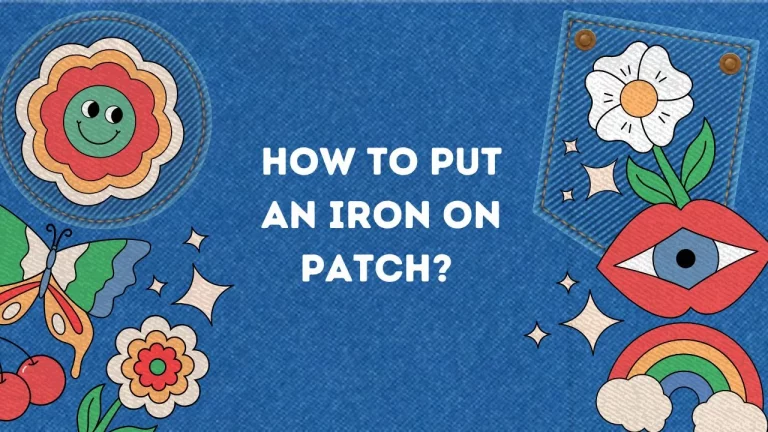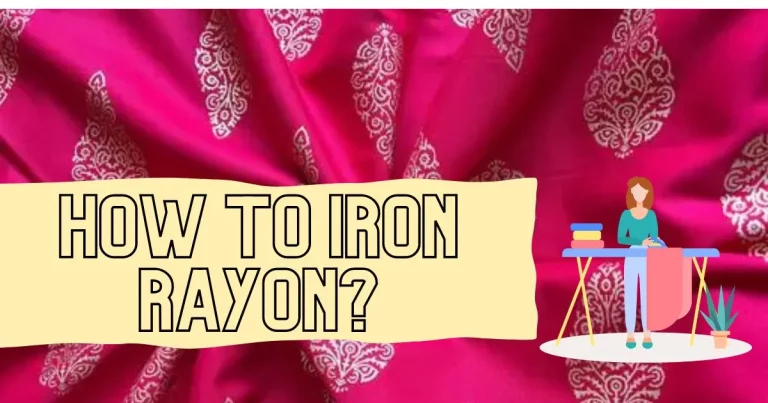DYE RAYON WITH STYLE | A SPLASH OF COLOR

Take your creative skills to the next level by using this guide to dye rayon, a soft and versatile fabric. Discover how to get colourful and customised effects while maintaining the delicate properties of rayon with these step-by-step instructions and crucial suggestions.
What is rayon fabric?
Made from cellulose, rayon is a flexible synthetic fibre that is usually manufactured from bamboo or wood pulp. Remarkably airy and silky, rayon bears a striking resemblance to the feel of natural fibres such as silk and cotton. Because of its soft drape, capacity to absorb moisture, and versatility in taking on different textures, it is a commonly used fabric in the textile industry for apparel, home furnishings, and other textile applications.
How I dyed rayon dress at home!
One lazy Saturday afternoon, I found myself staring at a plain white rayon dress hanging in my closet, longing for a splash of color. Inspired by a newfound love for DIY projects, I decided to embark on a tie-dye adventure. With a creative itch and a desire for a personalized touch, I opted for natural dyes to transform my rayon canvas.
After some research, I settled on a trio of nature’s hues for my tie-dye experiment. Turmeric, with its warm golden tones, promised a vibrant touch. Spirulina, a deep green algae powder, was my choice for earthy greens. Finally, the rich purple from crushed blackberries added a burst of berry bliss to the mix. Armed with these natural wonders, I eagerly prepared my dye baths, each one a potential burst of color.
With rubber bands strategically binding sections of the dress, I dipped it into the turmeric concoction, creating a stunning sunburst effect. The spirulina bath followed, imparting a mesmerizing swirl of greens. For the grand finale, the blackberry mixture worked its magic, resulting in a tie-dye masterpiece that echoed the colors of a vibrant summer garden. The process was not only rewarding but also environmentally friendly, giving my old dress a new lease on life with a touch of nature’s palette. Wearing my newly transformed tie-dye rayon dress, I couldn’t help but feel a sense of accomplishment and a connection to the natural world.

Can you dye rayon?
Of course Yes, you can dye rayon! Because rayon is a semi-synthetic fabric, dyeing it calls for careful study. However, it is achievable. Choose dyes designed for natural fibres or those specifically marked as rayon-safe. Be mindful of the water’s temperature, selecting cool to lukewarm water, and proceed methodically, washing the fabric beforehand and giving fixation enough time. To confirm the intended colour result, it’s also a good idea to test the dye on a tiny, discrete area or cloth swatch.
How to dye rayon – Step by step guide
While dyeing rayon can be an innovative and satisfying process, it must be done carefully to guarantee that the fabric keeps its drape and softness. This is a detailed tutorial on how to dye rayon:
Materials Needed:
- Rayon fabric
- Fabric dye (either natural or commercial)
- Rubber gloves
- Plastic squeeze bottles or containers
- Plastic drop cloth or garbage bags
- Plastic wrap
- Plastic or metal spoon
- Mild detergent
- Water
- Stirring stick or spoon
- Timer
Step 1: Pre-Wash the Rayon
It’s important to pre-wash the rayon fabric before dying it in order to get rid of any finishes or sizing that could obstruct the dye’s ability to absorb. Avoid fabric softeners and use cold water and a mild detergent.
Step 2: Pick Your Suitable Dye
Pick a dye that works well with rayon. All-purpose dyes made for natural fibres or dyes that react with fibres are good choices. If you want to use natural dyes, prepare them as directed by the particular dye source you have selected.
Step 3: Get the dye bath ready
To make the dye bath, according to the directions on the dye package. This usually entails putting the powdered colour into warm water to dissolve it. To prevent uneven colouring, make sure the dye is mixed thoroughly.
Step 4: Wet the Fabric
Before dying, properly wet the rayon fabric. This promotes more equal dye penetration. The cloth can be soaked in water or washed in a washbasin or bathtub with cold water.
Step 5: Apply the Dye
Either directly apply the dye with a squeeze bottle or submerge the wet rayon in the dye solution. Rubber bands or other tying techniques can be used for tie-dye or specialised patterns. For consistent colour, make sure to soak the fabric evenly.
Step 6: Permit Fixation
After dying the rayon, give it time for the colour to set in. As directed by the dye package instructions, adhere to the suggested time. For effects that are vivid and long-lasting, this step is essential.
Step 7: Rinse the Fabric
Run cold water over the dyed rayon until the water runs clear. This helps establish the colour and gets rid of extra dye. Use caution so as not to rip the fabric.
Step 8: Wash the Fabric
Use cold water and a light detergent to wash the dyed rayon separately. This extra washing stage aids in getting rid of any last bits of loose dye.
Step 9: Dry the Fabric
Use a low heat setting in a dryer or let the dyed rayon air dry. Steer clear of direct sunlight as it could mute the colours.
These instructions will help you effectively dye rayon fabric, giving you customised, colourful results without sacrificing the desired properties of the cloth.

How to dye clothes at home permanently?
Learning to dye clothes at home is a fun and rewarding experience. You can dye any of your clothes at home depending on the compatibility with the dye. Below here some steps to dye clothes.
- Prepare Clothes: To remove finishes, wash the item without using fabric softeners.
- Select Dye: Select a permanent fabric dye based on the style of clothing you wear.
- Thoroughly mix the dye by dissolving it in warm water for a mixed dye bath.
- Wet Fabric: Completely damp clothing item, either from a cold running tap or soaking in water.
- Apply Dye: For even coverage, use squeeze bottles or submerge in a dye bath.
- Fixate Dye: To guarantee a lasting bond, let the fabric sit for the suggested amount of time.
- Rinse Well: Until the runoff is clear, rinse coloured items in cold water.
- Wash Solo: Use a mild detergent and cold water to wash each item individually.
- Dry carefully: Avoid direct sunlight and either air dry or use a low heat setting in the dryer.
- Observe Instructions: For best results, always follow the directions on the dye package.

Can you tie dye rayon?
Yes, you can tie dye rayon, but the process requires careful handling to avoid damaging the delicate fibers. Use fabric dyes suitable for natural fibers and follow tie-dye techniques with a gentle touch for vibrant and unique results. Always check the dye and garment care instructions for compatibility before proceeding.
Best dye for rayon
The best dye for rayon is generally one that is designed specifically for use with natural fibers. Fiber-reactive dyes or all-purpose dyes formulated for natural fabrics tend to work well with rayon. These dyes chemically bond with the fibers, creating a lasting and vibrant color.
Popular dye brands such as Rit, Dylon, and Jacquard offer products that are suitable for rayon. When choosing a dye, make sure to check the product label to confirm that it is compatible with rayon and follow the manufacturer’s instructions for the best results.

Rit dye instructions to dye rayon
Popular brand Rit dye is well-known for its assortment of fabric dye products. In order to dye rayon from a Rit dye the following instructions must be followed for a good dye on rayon clothes:
- First, make a dye bath by dissolving the dye powder in hot water, as directed on the container. This is the first step in using Rit dye.
- Make sure the fabric is evenly saturated by fully wetting it and submerging it in the dye water. For a consistent colour distribution, stir constantly.
- The required intensity will determine how long to dye something, and stirring occasionally is advised while it’s happening.
- To get rid of extra colour, rinse the cloth in cold water after dying it until it runs clear.
- Lastly, to set the colour, wash the coloured fabric separately in a moderate detergent.
- For optimal results, follow the care recommendations on the Rit dye container.
Read more: How to iron rayon?
What are natural dyes for rayon?
If you prefer a more natural approach, certain plant-based dyes, like those derived from turmeric, indigo, or other botanical sources, can be used to dye rayon. Keep in mind that the color range may be more limited with natural dyes, and achieving specific shades may require experimentation.
Regardless of the type of dye you choose, it’s crucial to follow the instructions on the dye package carefully and conduct a small test on a fabric scrap or inconspicuous area before dyeing the entire garment to ensure the desired results.
| Natural Dye | Color | Process** |
| Turmeric | Yellow to deep orange | Simmer turmeric powder in water, soak rayon |
| Onion Skins | Yellow to brown | Boil onion skins in water, use liquid for dyeing |
| Black Tea or Coffee | Light to dark brown | Brew strong tea or coffee, use as dye bath |
| Beetroot | Pink to reddish-purple | Boil chopped beetroot in water, use liquid for dyeing |
| Avocado Pits | Pink to peach | Boil avocado pits in water, use resulting liquid |
| Cutch | Brown to reddish-brown | Boil cutch in water, use liquid for dyeing |
| Madder Root | Red to orange | Boil madder root in water, use liquid for dyeing |
** Note: The “Process” column provides a brief description of the general method for extracting the dye from each source. Actual procedures may vary, so it’s essential to refer to specific instructions for each dye for optimal results.
Read More: Best Cricuts For You
How to dye clothes – Rayon dress
To properly dye rayon clothing, start by choosing a fabric dye that works with the material of the garment. To get rid of any finishing or sizing, pre-wash the garments. As directed on the dye packaging, prepare the dye solution and make sure the dye is completely dissolved. For desired patterns, put the dye directly onto the fabric using squeeze bottles, or wet it before dipping it into the dye bath. Let the fabric sit for the necessary amount of time to guarantee that the dye is well fixed. After removing any extra dye by rinsing the coloured clothing in cold water until it runs clean, wash each item separately with a gentle detergent. In order to stop colour fading, let the clothes air dry or use a low heat setting in the dryer. Avoid direct sunlight.
Mind-Blowing Tips to dye rayon
Dyeing rayon requires special care to preserve its delicate nature. Here are some tips to help you successfully dye rayon:
- Choose the Right Dye: Opt for a dye specifically designed for natural fibers or one labeled as suitable for rayon to ensure vibrant and lasting color.
- Pre-Wash Rayon Thoroughly: Wash the rayon garment thoroughly before dyeing to remove any finishes or sizing that might interfere with the dye absorption.
- Test on a Scrap: Perform a small dye test on a scrap piece of rayon or an inconspicuous area of the garment to ensure the chosen dye yields the desired color.
- Gentle Mixing: Stir the dye bath gently to avoid causing excessive friction on the rayon fibers, which can lead to damage or pilling.
- Avoid Hot Water: Rayon can be sensitive to high temperatures, so use cool to lukewarm water when preparing the dye bath and during the dyeing process.
- Controlled Dye Application: Apply the dye carefully to achieve even saturation. Squeeze bottles or brushes can be useful for controlled application, especially for tie-dye or specific patterns.
- Use Mild Detergent: When washing the dyed rayon, use a mild detergent to maintain the fabric’s softness and prevent color bleeding.
- Mindful Rinsing: Rinse the dyed rayon gently under cold running water until the water runs clear. Be cautious to avoid excessive wringing or twisting.
- Air Dry or Low Heat: Choose air drying or use a low heat setting in the dryer to prevent damage. Avoid exposing the dyed rayon to direct sunlight, as it can lead to color fading.
- Follow Dye Package Instructions: Always adhere to the specific instructions provided on the dye package for the best and most reliable results. Each dye brand may have slightly different recommendations.
By following these tips, you can enhance the likelihood of achieving vibrant and long-lasting results when dyeing rayon.

Caution when dyeing rayon
Exercise caution with water temperature. Rayon is sensitive to heat, so avoid using hot water during the dyeing process. High temperatures can cause rayon fibers to weaken or shrink, compromising the fabric’s integrity and drape. Opt for cool to lukewarm water to protect the quality of the rayon garment and ensure successful dyeing without damaging the fabric.
What is the other name for rayon fabric?
Rayon fabric is also referred to as “viscose.” In the textile business, the terms “viscose” and “rayon” are frequently used interchangeably. Whereas viscose particularly refers to the kind of rayon produced by the viscose process—which entails dissolving cellulose in a solution to produce a regenerated cellulose fiber—rayon is a more general term used frequently.
Read more: Best Vinyl Cutters
How is rayon different from cotton?
Rayon and cotton are both popular fibers in the textile industry, but they differ in terms of their origin, production processes, and characteristics. Here are some key differences between rayon and cotton:
| Characteristic | Rayon Fabric | Cotton Fabric |
| Source | Man-made, derived from plant cellulose | Natural fiber from cotton plant |
| Production Process | Semi-synthetic (e.g., viscose, lyocell) | Natural, harvested from cotton bolls |
| Comfort and Feel | Soft, smooth, silk-like appearance | Soft, breathable, with varying textures |
| Absorbency | Good absorbent qualities | Highly absorbent, wicks moisture away |
| Strength | Weaker, can lose strength when wet | Strong and durable, resistant to wear |
| Wrinkling | Prone to wrinkling, may require care | Can wrinkle but tends to hold up well |
| Environmental Impact | Varies; some forms considered more environmentally friendly | Natural, biodegradable, but farming practices can impact the environment |
Conclusion
In conclusion, learning the craft of how to dye rayon requires a careful balancing act between imagination and accuracy. It’s crucial to select appropriate dyes, comprehend the sensitive qualities of the fabric, and adhere to detailed instructions. This book gives aficionados the know-how to turn rayon into unique, colorful designs while maintaining the fabric’s delicate drape and integrity.






